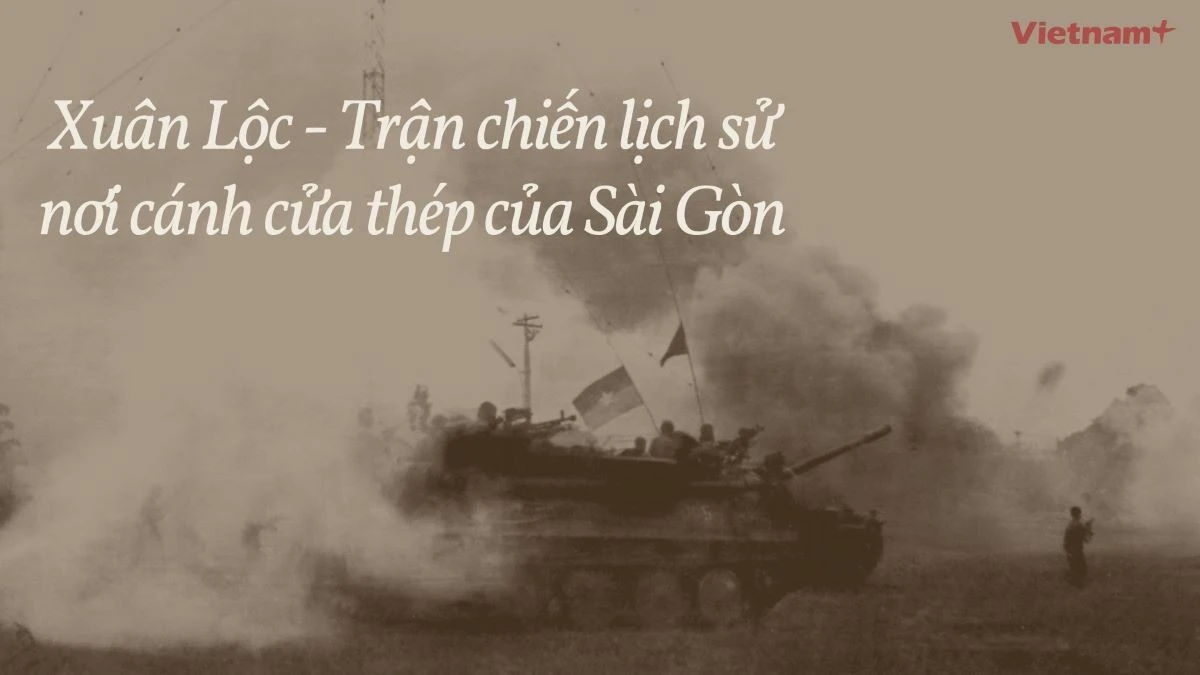
One of the important milestones in the historic Ho Chi Minh campaign of our army that contributed to the Great Victory of Spring 1975 was the Xuan Loc victory, which took place from April 9-21, 1975.
This was a particularly important campaign, taking place very fiercely because the enemy strengthened their defenses and called on their soldiers to defend to the death. However, after the attack was ineffective, we used a trick to smash the “steel door” of Xuan Loc, opening the way to carry out the Ho Chi Minh Campaign.
The Xuan Loc Campaign is considered a typical example of the art of using tactics to defeat the enemy in the treasury of modern Vietnamese military history. This victory created a position and territory for not only the 4th Corps but also the 2nd Corps to advance from the North, to have a foothold, and to act as a springboard for the Central and the Regional Command to carry out the Ho Chi Minh Campaign.
Open wide the "steel door" of Xuan Loc
During the 1975 Spring General Offensive and Uprising, after the acupoint blow of Buon Ma Thuot, we quickly liberated the Central Highlands, Hue, Da Nang and most of the coastal provinces of the Central region, creating an isolated position, threatening Saigon-Gia Dinh and the remaining lands of the Eastern and Western regions of the South of the Saigon government.
To stop the advance of the Liberation Army, the US and the Saigon government concentrated their remaining strength to establish a defense line stretching from Phan Rang through Xuan Loc to Tay Ninh; in which, Xuan Loc was the key point - the "steel door" protecting Saigon-Gia Dinh in the East.
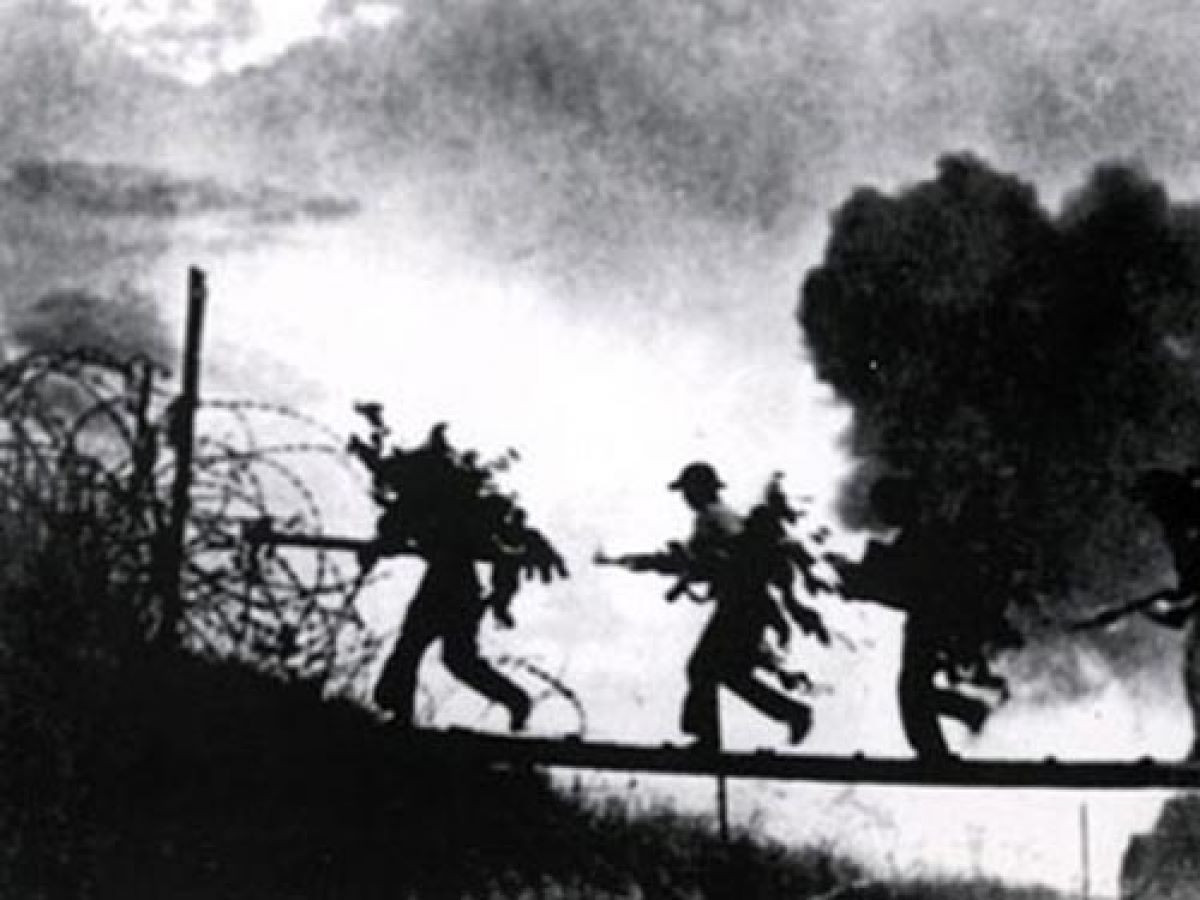
The Liberation Army developed an attack to capture the headquarters of the puppet 18th Division during the Xuan Loc Campaign in April 1975. (Documentary photo)
Xuan Loc is a town of Long Khanh province (currently Long Khanh city, Dong Nai), about 80 km east of Saigon, straddling important traffic routes, such as National Highway 1A to Saigon, National Highway 20 connecting Saigon with Da Lat and National Highway 15 connecting Saigon with Ba Ria-Vung Tau.
The US Army Chief of Staff, General Frederick C. Weyand, personally went to Xuan Loc to inspect and emphasized: "We must keep Xuan Loc, losing Xuan Loc means losing Saigon."
To turn Xuan Loc into a "steel door," the enemy concentrated here an infantry division, a ranger regiment, an armored tank regiment, four artillery battalions, and forces prepared for special support.
On our side, properly assessing the importance of the Xuan Loc gateway, on April 2, 1975, thoroughly implementing the guiding ideology of the Politburo and the Central Military Commission, the Regional Command decided to launch an attack to liberate Xuan Loc, aiming to destroy the 18th Division on the outer ring, destroy the enemy's plot to defend from afar, destroy the enemy's defense to consolidate Saigon, cut off traffic, and isolate Saigon. The task of attacking Xuan Loc was assigned to the 4th Corps.
At 5:40 a.m. on April 9, 1975, the 4th Army Corps opened fire to attack Xuan Loc. On the first day of fighting, our troops captured half of the town and the entire administrative area of the sub-region.
In the following days, the battle in Xuan Loc-Long Khanh became increasingly fierce. Faced with the difficult situation, we studied the developments of the battle and decided to reorganize our forces, changing the fighting style from direct attack to siege and isolation to weaken the enemy forces in the town; and destroy the newly-arrived enemy reinforcements that were still not firmly established on the outer perimeter.
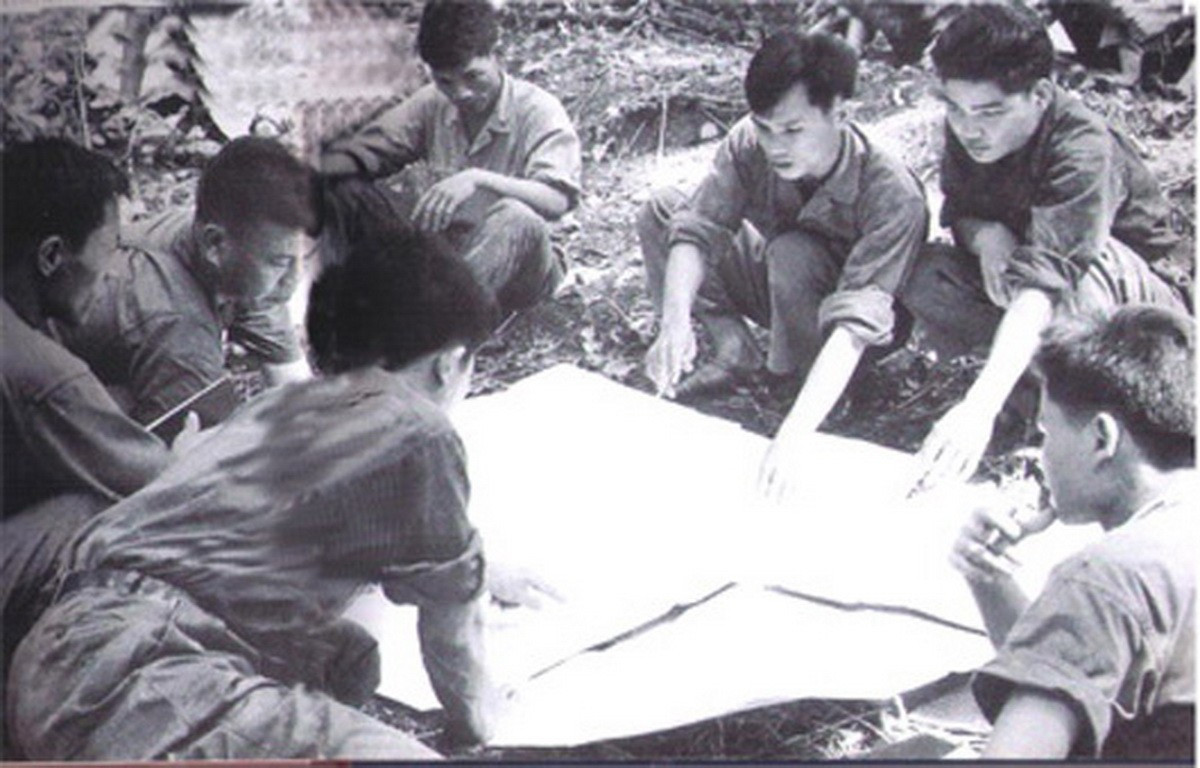
Commander of Regiment 3 (Division 304) discusses combat plans in the Xuan Loc Campaign. (documentary photo)
We organized to capture Dau Giay and Nui Thi intersections, cut off Highway 1 and blocked reinforcements from Bien Hoa and Trang Bom, cutting Xuan Loc off from Bien Hoa.
At dawn on April 15, 1975, our troops began shelling Bien Hoa airport. In the Xuan Loc area, the 7th Division and the 341st Division continuously fought with the enemy, defeating the two remaining battalions (43 and 48) of the 18th Division and destroying a part of the airborne troops.
Seeing that they could not defend Xuan Loc, on April 20, the enemy retreated and was pursued and destroyed by our troops. On April 21, Xuan Loc town and the entire Long Khanh province were liberated.
After the "steel door" of Xuan Loc was smashed, a series of major political events in Saigon's political arena took place one after another.
On the evening of the liberation of Xuan Loc, Nguyen Van Thieu had to resign as President of the Republic of Vietnam, and Tran Van Huong took his place in the context of the increasing panic throughout Saigon as the American evacuation campaign was being carried out at a very urgent pace.
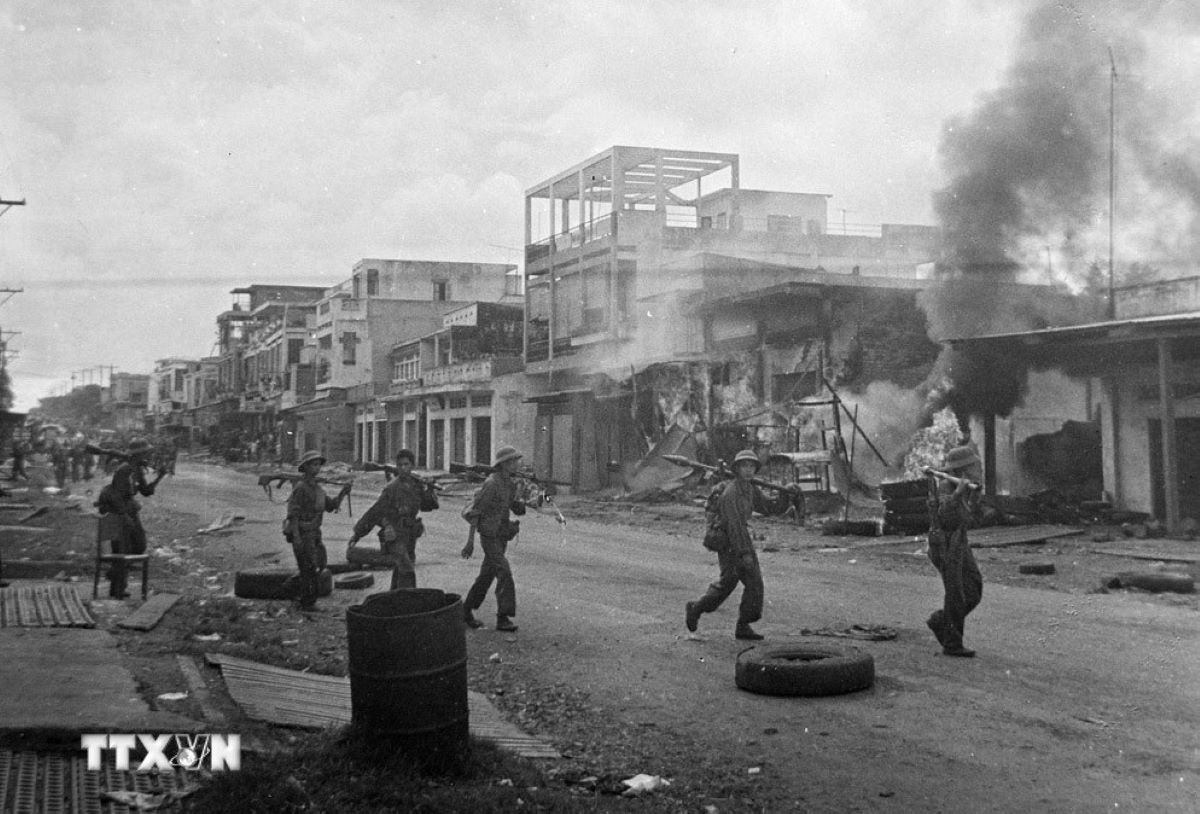
Troops of Division 341 (Army Corps 4) attacked and liberated Xuan Loc town, destroying the strongest defense line east of Saigon, April 21, 1975. (Photo: VNA)
The very next day, April 22, the Party Committee and the Ho Chi Minh Campaign Command approved and officially approved the plan to attack and liberate Saigon-Gia Dinh.
Then, on April 23, across the ocean, at Tulane University in New Orleans, US President Gerold Ford declared: The war is over for the Americans.
"The victory at Xuan Loc shook the entire enemy defense system around Saigon, causing the enemy's morale to collapse even further. The news of victory excited the people of the whole country." (Excerpt from the memoir "General Headquarters in the Spring of Complete Victory" by General Vo Nguyen Giap)
Insider's memories
With the spirit of "attacking like a waterfall," after 12 days and nights of extremely heroic fighting by our army and people, the "steel door" of Xuan Loc was opened, paving the way for our army to enter and liberate Saigon, unifying the country.
50 years have passed but the memories of the Xuan Loc battle are still intact for many veterans.
Being associated with the turning point battle in Xuan Loc in 1975, when he was a captain and deputy commander of Regiment 266 of Division 341, Mr. Le Tien Hat currently keeps many valuable souvenirs associated with the battle to liberate Xuan Loc. During the most brilliant period of his life, he devoted all his youth and enthusiasm to serving in the ranks of Division 341 of the 4th Army Corps.
According to him, Xuan Loc was considered one of the extremely important strategic gateways. Based on the understanding of the actual battlefield situation, on April 2, 1975, the Regional Command, under the profound guidance of the Politburo and the Central Military Commission, decided to launch an offensive campaign to liberate Xuan Loc. The strategic goal of the campaign was to destroy the 18th Division stationed on the outer perimeter, disrupt the enemy's long-range defense plan, and at the same time collapse the defensive position to consolidate Saigon. Not only that, the campaign also played an important role in cutting off strategic traffic routes and isolating the enemy's central area in Saigon.
The atmosphere of preparation for the Xuan Loc battle in the entire army corps was extremely urgent and serious. At the 266th Regiment, where he worked, everyone clearly understood that taking down this stronghold was the decisive step to enter Saigon and gain the final victory. Everyone made efforts and was determined to contribute, no matter how small, to the campaign. In particular, there were soldiers around 15-16 years old, like Dam Duy Thien, who drew extremely detailed battle maps, suitable for the actual situation, helping the commanders to effectively conduct the battle.
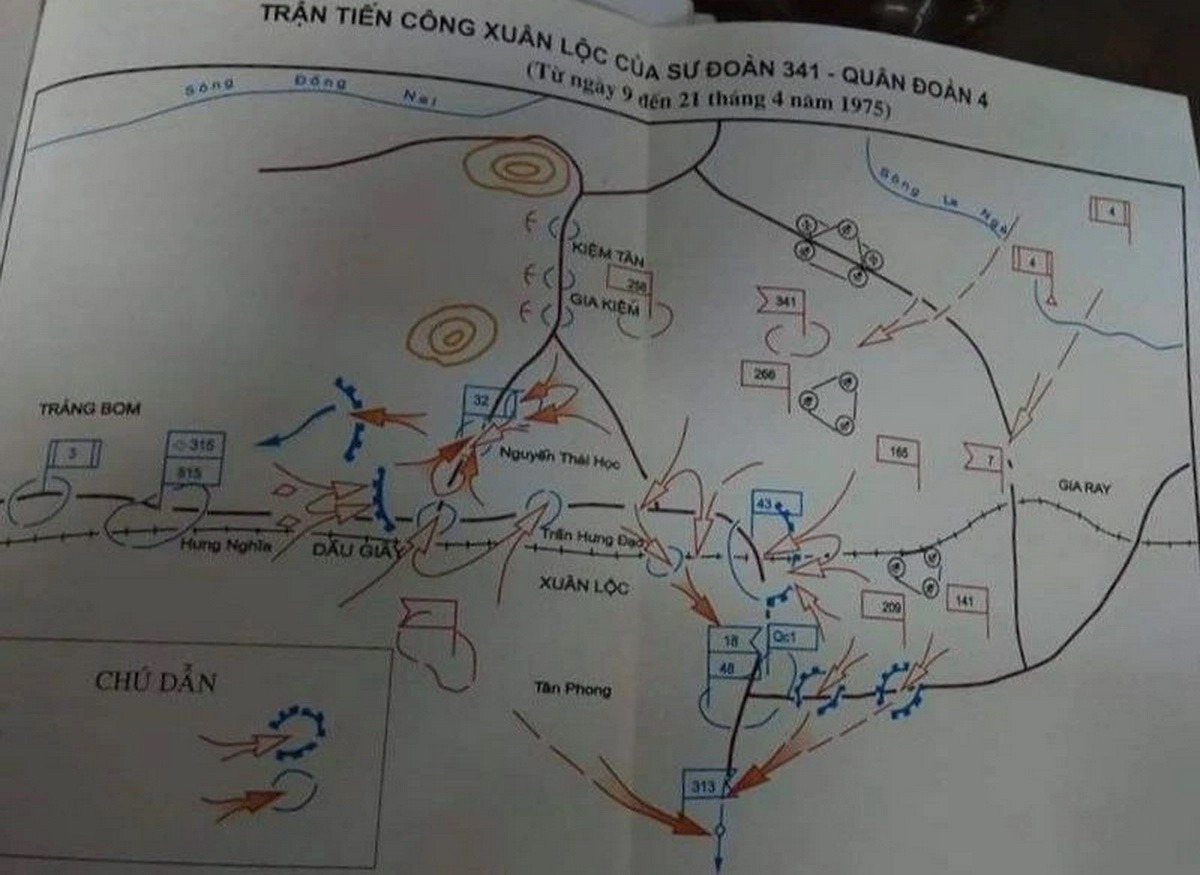
Map of the Xuan Loc battle completed by veteran Dam Duy Thien.
Like Mr. Hat, veteran Dam Duy Thien - the person who drew the battle map of Xuan Loc, still remembers clearly the historic April days on the southern battlefield.
At that time, Dam Duy Thien, a young man of 16 years old, put aside his dream of becoming a doctor to go protect the Fatherland. When he joined the 266th Regiment, he was the youngest person in the unit. Having a talent for painting, he was assigned by his superiors to draw battle maps.
Mr. Thien recalled that in the battle of Xuan Loc, when he arrived at a new location and received a lot of information about the enemy from scouts, he had to try to collect, observe and use his memory to connect all the data. At that time, whatever the commander said, he had to write down immediately. In addition, when the units and departments went on reconnaissance and reported back, they also needed to grasp the information and then display it accurately on the map.
In the early days of the Xuan Loc battle, although we had captured some targets in the town, our troops had not yet completely destroyed the enemy forces. In that situation, the attack tactics had to change, forcing the actual battle map to be flexible according to the new plan of the superiors.
Thanks to the precise drawings on the map and the brave and resilient spirit, after 12 days and nights (from April 9 to April 20, 1975), our army accurately attacked and destroyed the "throat" of Saigon.
Veteran Dang Dinh Long (born in 1942, in Duc Ninh commune, Dong Hoi city, Quang Binh) recalled: “For me, the most profound memory is the moment when my comrades and I directly defeated the defense line in Xuan Loc and approached Trang Bom to advance into Saigon. The fierce battle to break through the enemy's steel defense line lasted for 12 consecutive days and nights."
With the strategic location of Xuan Loc-Long Khanh, to liberate Saigon, one must liberate Xuan Loc-Long Khanh. Therefore, the Xuan Loc battlefield became an extremely fierce battlefield.
On April 9, 1975, Mr. Long and his comrades were ordered to open fire simultaneously from all directions on the "steel door" of Xuan Loc. After 12 days and nights of fierce fighting, fighting over every house and street corner, the enemy's Xuan Loc defense line gradually weakened.
After breaking the Xuan Loc defense line, on the night of April 26, 1975, Mr. Long's unit opened fire to attack Trang Bom. With great enthusiasm, the army advanced to capture Bien Hoa airport, and together with friendly units crossed the Dong Nai River to enter Saigon.
During this fierce battle, Mr. Long was wounded for the second time by 15 pieces of M79 bullets stuck in his body. While injured, he had to crawl nearly 1 km, enduring the pain while performing a reconnaissance mission right next to the American and puppet reconnaissance squad.
“For us soldiers at that time, we were always ready to face danger and accept death, determined to fight to the end. When we entered Saigon, we witnessed puppet soldiers abandoning their weapons and running in panic, and people pouring into the streets to welcome the troops. We were extremely proud and moved. Those were unforgettable emotions," Mr. Long said emotionally.
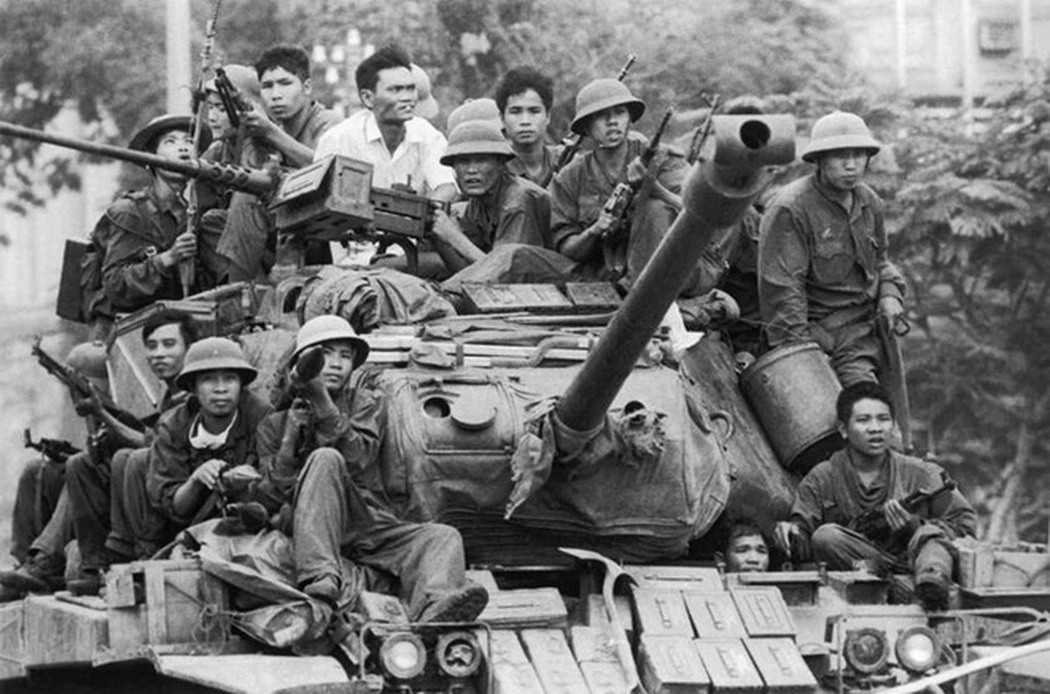
Smashing the "steel door" of Xuan Loc, opening the way to Saigon. (Photo archive)
Mr. Pham Quang Than (former soldier of Division 341, Corps 4; currently Chairman of the Veterans Association of Long Khanh City, Dong Nai) recalled: “On April 9, 1975, all units received orders to advance to liberate Xuan Loc-Long Khanh. At that time, together with the people, the army units fought and liberated wherever they went, the momentum of the attack was like a whirlwind. The main army units advanced to Xuan Loc, Long Khanh, wherever they went, they were welcomed by the people, and provided with food and provisions."
For Mr. Tran Van Phu, a former soldier of the Long Khanh Military Arsenal Engineering Team, the memories of the historic battle are always in his mind. He recalls that on the morning of April 9, 1975, the main force troops began to open fire simultaneously from all directions, attacking the "steel door" of Xuan Loc.
At that time, local army units also advanced, fighting from the inside out; the people rose up, supported and supplied the army forces, taking over wherever they fought.
“With the strategic location of Xuan Loc-Long Khanh, the enemy determined that losing Xuan Loc meant losing Saigon. For our army, if we wanted to liberate Saigon, we had to liberate Xuan Loc-Long Khanh. Therefore, the Xuan Loc-Long Khanh battlefield became an extremely fierce battlefield, the enemy used a large amount of modern weapons and fought back fiercely," Mr. Pham Quang Than shared.
Realizing that Xuan Loc would only be valuable if it was supplied from Bien Hoa, the Campaign Command decided to change tactics, attacking across the direction from Dau Giay, occupying the high point of Thi Mountain, aiming to isolate Xuan Loc from enemy support from the West. After 12 days and nights of all-out attacks, while simultaneously cutting off reinforcements, our army had defeated the enemy and scattered them in many places.
“With the momentum of the attack rushing like a waterfall, our troops controlled the battlefield. Locally, the army units and the people fought from the inside out, causing the puppet army officers and soldiers to flee in all directions, looking for a way to escape,” Mr. Tran Van Phu recalled.
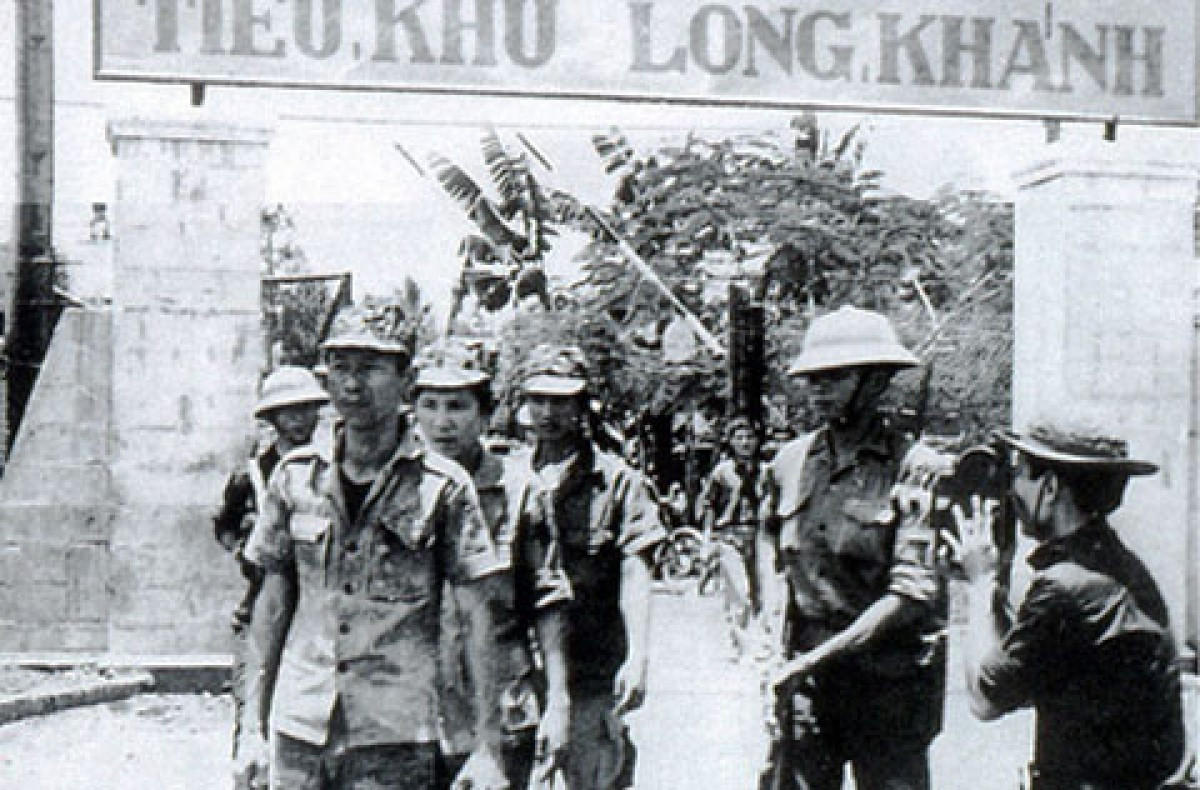
Capture enemy prisoners in Long Khanh sub-region. (Photo archive)
Historical significance and valuable lessons learned
The victory of the Xuan Loc campaign not only affirmed the Party's correct and creative line in leading and directing the revolutionary war, but also consolidated and promoted the political and spiritual factors of our entire army and people, creating a combined strength to reach the final victory - the historic Ho Chi Minh Campaign.
The victory of the Xuan Loc campaign created a favorable assembly area, serving as a springboard for the Eastern Wing - one of the five main mobile forces of the campaign formation named after beloved Uncle Ho - to liberate Saigon-Gia Dinh.
The Eastern Front was opened, the troops marched towards Saigon with unshakable momentum. The "steel door" of Xuan Loc was broken open, opening the door for our army to launch the historic Ho Chi Minh Campaign, advancing to liberate Saigon, storming straight into the last lair of the US-puppet regime, contributing to the victory of the historic Ho Chi Minh Campaign, ending the glorious resistance war against the US to save the country of the Vietnamese people.
The victory of Xuan Loc also drew many valuable lessons. That is how to thoroughly grasp the strategic intentions of the Party Central Committee, make timely and accurate decisions; know how to organize and use local forces, promote the combined strength of people's war; in timely, sensitive and flexible direction and command; promote strategic offensive, seize opportunities to win.
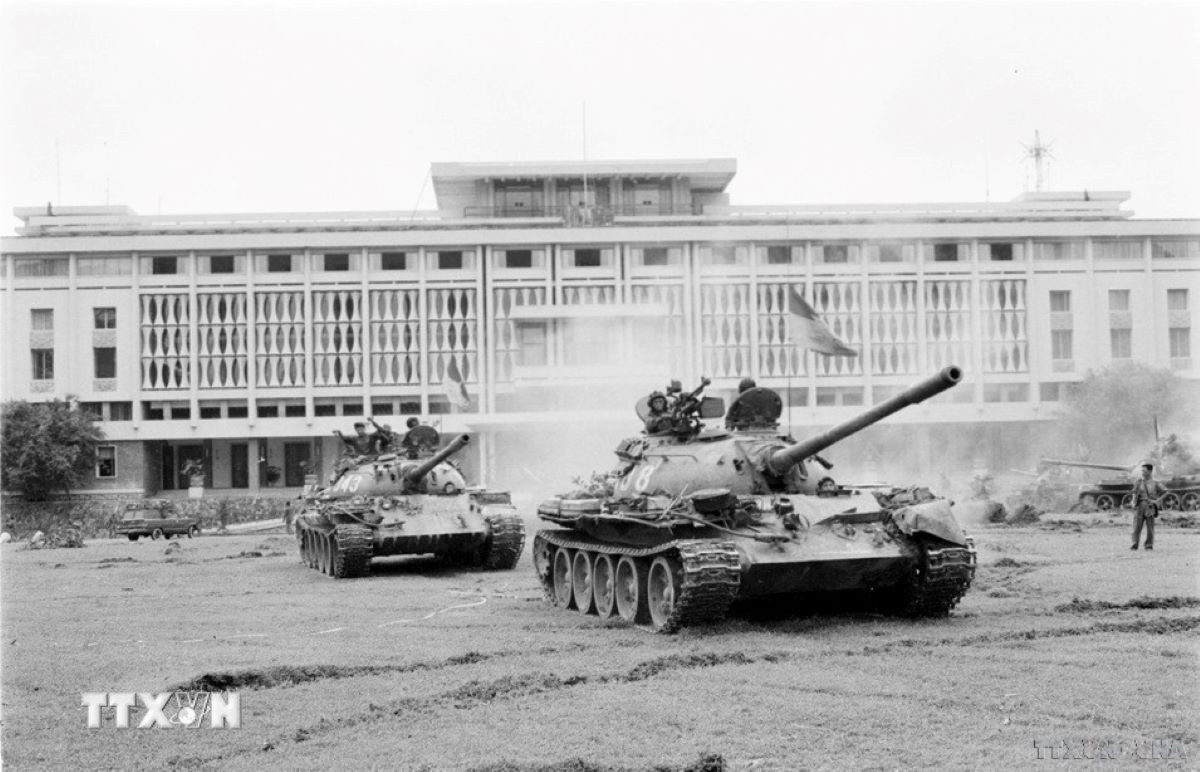
On the morning of April 30, 1975, from all directions, hundreds of tanks, armored vehicles and infantry simultaneously advanced straight to the Presidential Palace of the Saigon puppet regime, liberating Saigon. (Photo: Hua Kiem/VNA)
Those lessons and spiritual values remain intact in the cause of building and defending the Fatherland today.
Currently, hostile forces have not given up their plot of "peaceful evolution" and causing riots and overthrow, and have been using the tricks of "democracy" and "human rights" in an attempt to change the political regime in Vietnam...
In that situation, to firmly protect the Socialist Republic of Vietnam and the achievements of the Xuan Loc victory in particular, of the 1975 Spring General Offensive and Uprising and of the national liberation revolution in general, it requires the entire Party, the entire people and the entire army to constantly raise the spirit of revolutionary vigilance, build the political-spiritual factor, build a solid people's heart position, build an all-people national defense, an all-people national defense position associated with a people's security position, build provinces and cities into solid defense zones, proactively defend the country from the time the country is not yet in danger./.
(Vietnam+)
Source: https://www.vietnamplus.vn/xuan-loc-tran-chien-lich-su-noi-canh-cua-thep-cua-sai-gon-post1022561.vnp


![[Photo] General Secretary To Lam receives French Ambassador to Vietnam Olivier Brochet](https://vstatic.vietnam.vn/vietnam/resource/IMAGE/2025/4/17/49224f0f12e84b66a73b17eb251f7278)
![[Photo] Closing of the 4th Summit of the Partnership for Green Growth and the Global Goals](https://vstatic.vietnam.vn/vietnam/resource/IMAGE/2025/4/17/c0a0df9852c84e58be0a8b939189c85a)
![[Photo] National Assembly Chairman Tran Thanh Man meets with outstanding workers in the oil and gas industry](https://vstatic.vietnam.vn/vietnam/resource/IMAGE/2025/4/17/1d0de4026b75434ab34279624db7ee4a)

![[Photo] Promoting friendship, solidarity and cooperation between the armies and people of the two countries](https://vstatic.vietnam.vn/vietnam/resource/IMAGE/2025/4/17/0c4d087864f14092aed77252590b6bae)
![[Photo] Nhan Dan Newspaper announces the project "Love Vietnam so much"](https://vstatic.vietnam.vn/vietnam/resource/IMAGE/2025/4/17/362f882012d3432783fc92fab1b3e980)


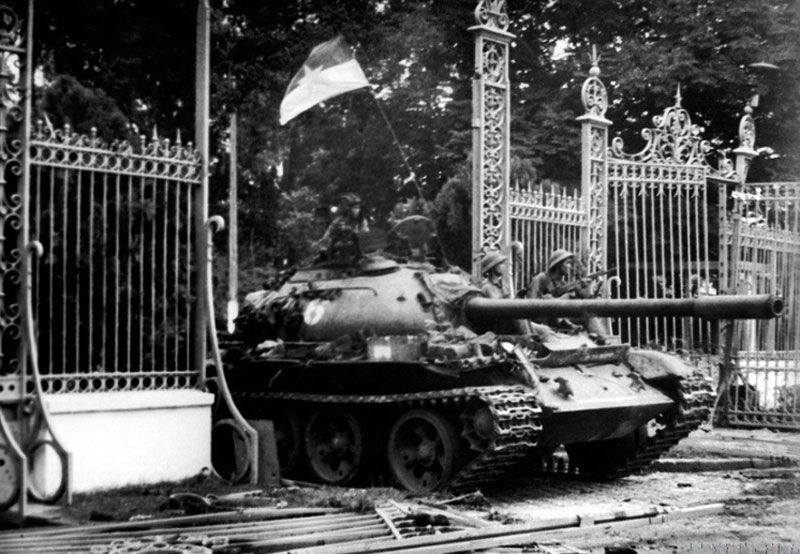

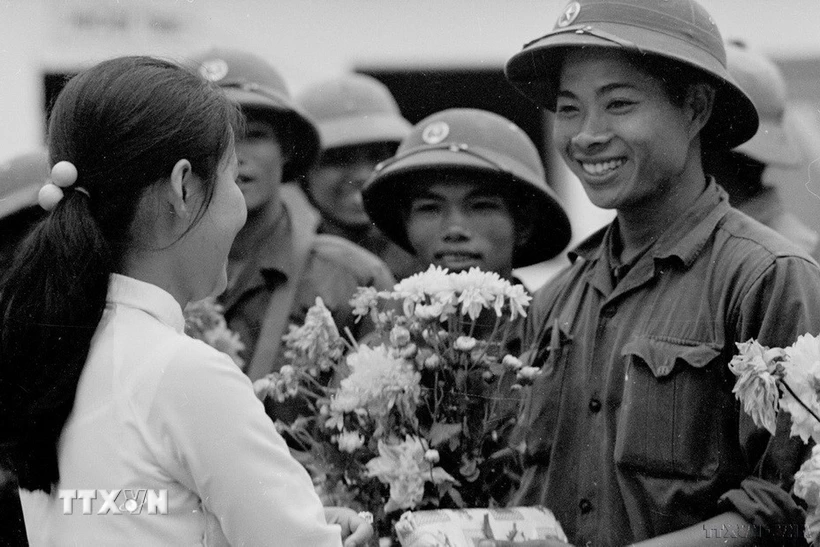
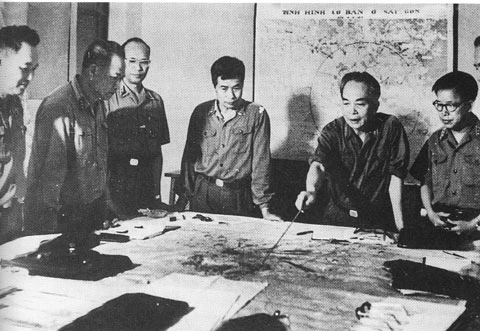






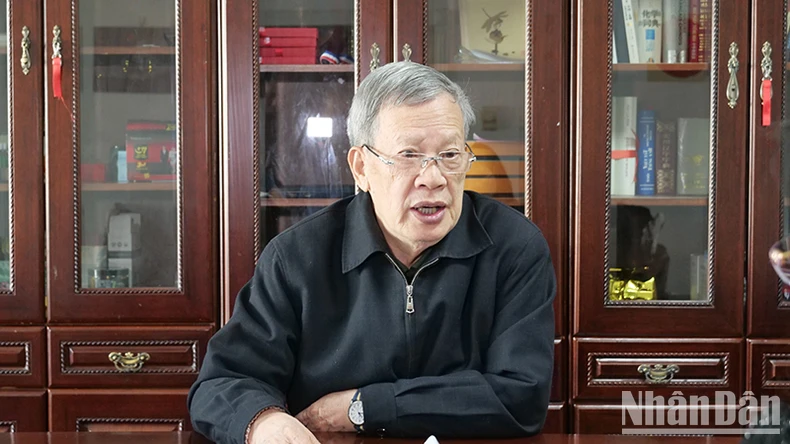







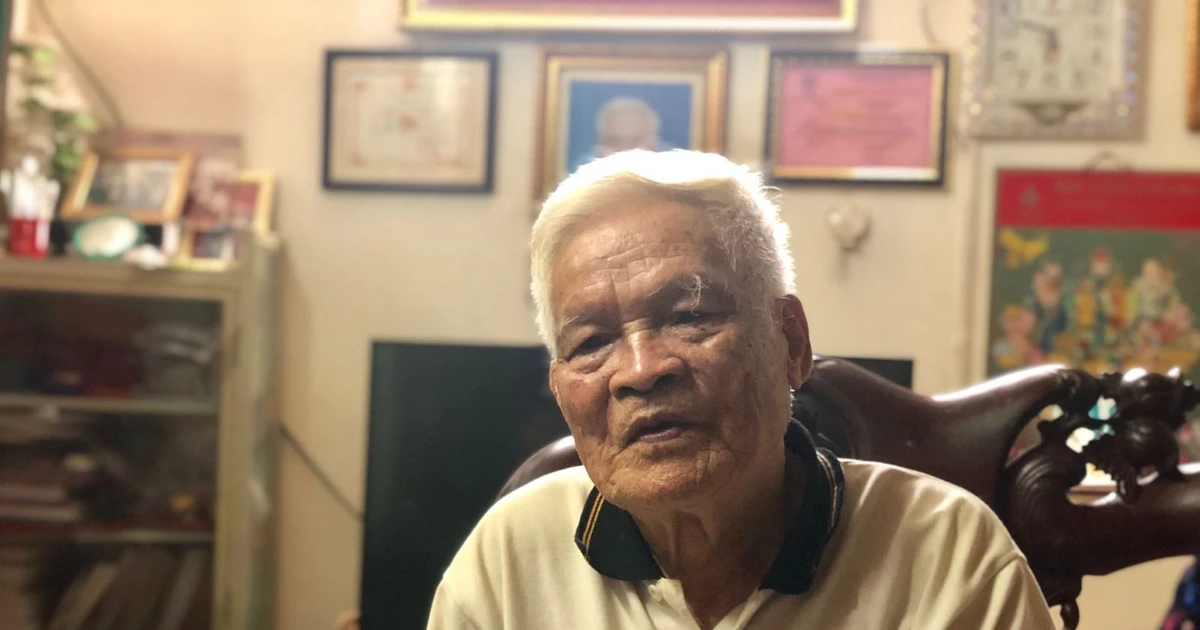



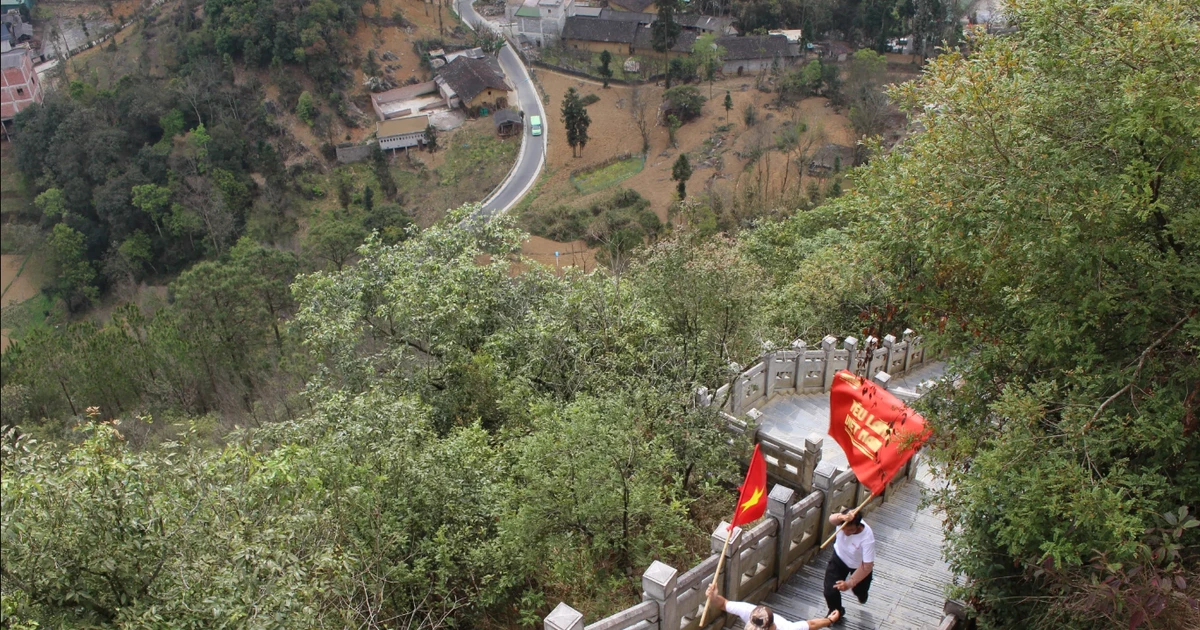

![[Photo] Welcoming ceremony for Chinese Defense Minister and delegation for friendship exchange](https://vstatic.vietnam.vn/vietnam/resource/IMAGE/2025/4/17/fadd533046594e5cacbb28de4c4d5655)



























![[Video] Viettel officially puts into operation the largest submarine optical cable line in Vietnam](https://vstatic.vietnam.vn/vietnam/resource/IMAGE/2025/4/17/f19008c6010c4a538cc422cb791ca0a1)

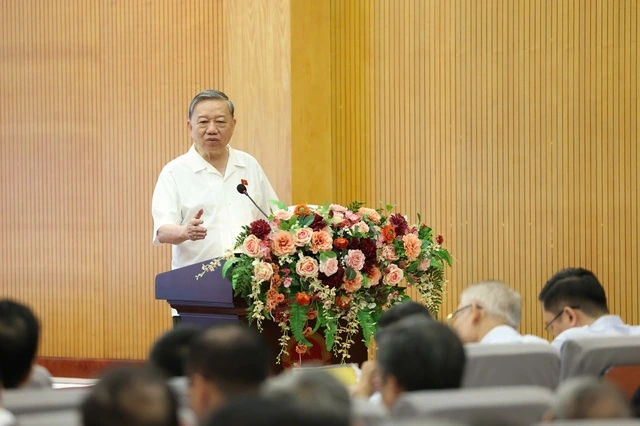




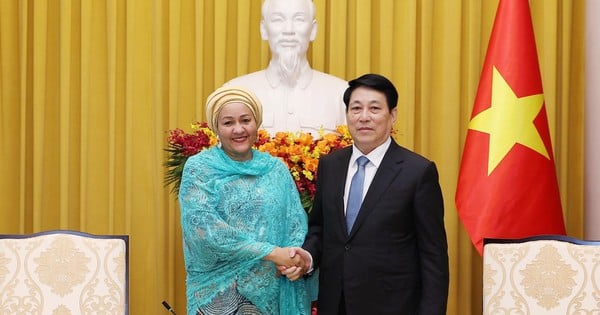






























Comment (0)